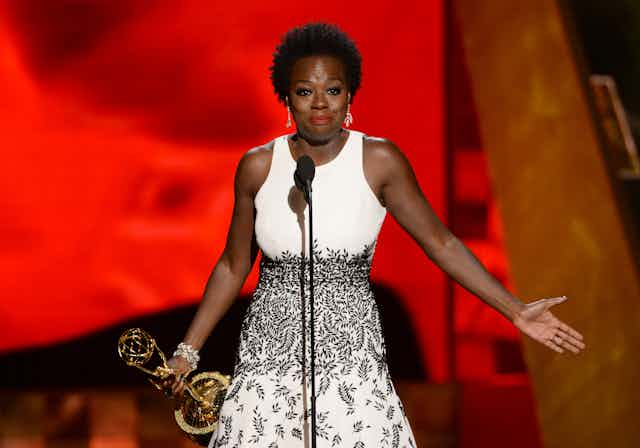In 2014, a hacker group leaked confidential information from Sony Pictures Entertainment, including a controversial email written by an unnamed producer.
In the email, which went viral, the producer questioned the decision to cast Denzel Washington as the lead in “The Equalizer”:
“I believe that the international motion-picture audience is racist – in general, pictures with an African-American lead don’t play well overseas… But Sony sometimes seems to disregard that a picture must work well internationally to both maximize returns and reduce risk, especially pictures with decent-size budgets.”
Many actors, activists and newspapers have raised concerns related to diversity in Hollywood films. Several organizations, including blackfilm.com and the Geena Davis Institute, now actively monitor and promote diversity in media.
But was the Sony producer onto something in raising concerns about the biases of moviegoers abroad? Is it possible that the lack of nonwhite and female lead characters in Hollywood films is driven, in part, by economic concerns from movie studios? Our analysis of more than 800 films sampled between 2005 and 2012 suggests the answer is “yes.”
Who’s in the movies
Research suggests that films suffer from demographic disparities.
In one study, researchers at the USC Annenberg School for Communication and Journalism analyzed the demographic characteristics of over 11,000 speaking characters in hundreds of films and television series released in 2014. Approximately 75 percent of all actors involved were white. Meanwhile, 12 percent were black, 6 percent Asian, 5 percent Hispanic/Latino and 3 percent were identified as Middle Eastern or “other.”
We looked at the top-grossing films each year from 2005 to 2012, using information from Box Office Mojo, IMDB, The New York Times movie reviews and Rotten Tomatoes. Our data include the 150 top films each year that were distributed domestically and abroad, excluding G-rated and animated films.
Just 28 percent of movies in our sample had a female first lead character. Only 19 percent had a nonwhite first lead character.
These figures are in stark contrast to the demographics of the U.S. population. According to the U.S. Census Bureau, approximately 51 percent of the U.S. is female and 35 percent is nonwhite or Hispanic.
Consumer tastes
Recently, film studios have faced more intense competition from independent filmmakers, increased globalization and streaming video sources. In this environment, film studios may be inclined to supply movies with characteristics that appeal to more consumers and increase profits.
Since international box office revenue is now more than twice as large as domestic revenue, the economic incentive for studios to cater to the preferences of international audiences is larger than ever. The top five international box office markets are China, Japan, the U.K., France and India.
Does consumer discrimination in these markets explain the underrepresentation of female and nonwhite actors in Hollywood films?
We analyzed the potential gender and racial biases from the consumer side through their influence on box office revenue, both domestically and internationally. We looked at the relationship between cast demographics and theater audiences, controlling for other factors that may affect a movie’s success, such as production budgets, release timing, genre, critic ratings and star power.
There’s significant evidence that a film cast’s racial diversity negatively affects international box office performance. By our estimates, a 10 percentage point increase in racial cast diversity leads to 17 percent less international revenue, even after controlling for key film characteristics. This effect disappears in the domestic market.
Similarly, adding just one nonwhite lead actor led to a 40 percent decrease in international revenue.
However, we did not find any link between gender diversity and movie revenue. Productions with a female lead character fared as well economically outside the U.S. as those with a male lead.
International audiences
The results provide convincing evidence that studio executives have legitimate concerns about the relationship between diversity and revenue.
The negative effects of nonwhite characters on profits could explain the racial disparity observed in Hollywood films. In that case, it could be argued that consumer prejudice leads to roles that favor white actors more, because the increased revenue is attractive to studio executives.
Most movies make a lot more foreign revenue than domestic revenue, but movies with diverse casts can struggle abroad, even if they are incredibly successful domestically. For example, 2012’s “Think Like a Man” made US$91.5 million in the domestic market but just $4.5 million in the international market. “The Help,” a 2011 Academy Award-winning period drama, made $169.7 million in the domestic market compared to $46.9 million in the international market.
This doesn’t mean that preferences of studio executives are not at all responsible for the demographic disparity, but it does suggest that market forces are at least partly responsible.
Consumer tastes are a likely factor driving studios’ preference of nonwhite underrepresentation in movies. The revenue implications of international audience preferences are simply too large for studios to ignore.

